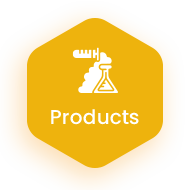Acrylonitrile butadiene styrene plastic
Acrylonitrile Butadiene Styrene, commonly known as ABS, is a versatile and widely used thermoplastic polymer known for its strong and durable characteristics. It is a copolymer made from three monomers: acrylonitrile, butadiene, and styrene. This combination results in a material with a unique balance of properties, making ABS suitable for a wide range of applications.
ABS exhibits excellent impact resistance, even at low temperatures, making it a preferred choice for products that may experience rough handling or sudden impacts. Additionally, it possesses good chemical resistance, dimensional stability, and electrical insulation properties. ABS is easily machinable, allowing for various processing methods like injection molding, extrusion, and 3D printing. Its affordability and ease of fabrication contribute to its popularity in manufacturing consumer goods, automotive parts, toys, electronic housings, and diverse industrial applications.

Functions and Characteristics
- High Impact Strength: ABS is known for its excellent impact resistance, making it suitable for applications where the material may experience physical stress or sudden impacts.
- Versatility: ABS is a versatile thermoplastic that can be easily processed through methods such as injection molding, extrusion, and 3D printing, allowing for a wide range of applications.
- Dimensional Stability: The material maintains its shape and dimensions well, providing stability in different environmental conditions.
- Chemical Resistance: ABS demonstrates good resistance to many chemicals, enhancing its durability and suitability for various applications.
- Easily Machinable: ABS is easy to machine, making it convenient for manufacturers to shape and form the material into desired products.
- Affordability: ABS is a cost-effective thermoplastic, making it an economical choice for many industries.
- Electrical Insulation Properties: The material possesses good electrical insulation properties, making it suitable for certain electronic and electrical applications.
- Ease of Coloring: ABS can be easily colored, allowing for a wide range of aesthetic options in the final products.
Specification
| Properties | Test Method | Test Condition | Units | Typical Values |
| Physical | ||||
| Melt Flow Rate | ASTM D-1238 | 220ºC, 10Kg | g/10min | – |
| Specific Gravity | ASTM D-792 | 23ºC | g/cm3 | 1.03 |
| Ash | – | 800ºC,30min | % | – |
| Mechanical | ||||
| Tensile Strength | ASTM D-638 | 50mm/min | MPa | 46 |
| Elongation at Break | ASTM D-638 | 50mm/min | % | 14 |
| Flexural Strength | ASTM D-790 | 2mm/min | MPa | 62 |
| Flexural Modulus | ASTM D-790 | 2mm/min | MPa | 1800 |
| Impact Strength, IZOD non-notched | ASTM D-256 | 23ºC | KJ/m2 | – |
| -30ºC | KJ/m2 | – | ||
| Impact Strength, IZOD notched | ASTM D-256 | 23ºC | KJ/m2 | 17 |
| -30ºC | KJ/m2 | – | ||
| Thermal | ||||
| Heat Deflection Temp. | ASTM D-648 | 1.8Mpa | ºC | 93 |
| 0.45Mpa | ºC | 98 | ||
| Others | ||||
| Mold Shrinkage | ASTM D-955 | 23ºC | % | 0.6-0.9 |
| Flammability | UL94 | 1/16″ | HB | |
Tip: The technical data sheet is for reference only. We supply the OEM service per your request.
Application
ABS resin largest application areas are the automotive, electronics and building materials.
The automobile industry: Automotive instrument panels, exterior body panels, interior panels, steering wheel, panels, door locks, bumpers, ventilation tubes etc.
Electrical aspects: Widely used in refrigerators, televisions, washing machines, air conditioners, computers, copiers and other electronic appliances.
Major Applications
3D Printing:
ABS is a popular material for 3D printing, producing durable and impact-resistant prototypes, functional parts, and consumer products.

Furniture
ABS is employed in the production of furniture components, handles, and trims due to its durability, ease of processing, and the ability to mimic the appearance of other materials.

Package & Storage & Transportation
-
Package
In 25kg PP woven bag, or per your requirement.
17-17.5mt/20'FCL 24-24.5mt/40'FCL -
Storage
The resin should be stored in a drafty, dry warehouse and away from fire and direct sunlight. It should not be piled up in the open air.
-
Transportation
During transportation, the product should not be exposed to strong sunlight or rain and should not be transported together with sand, soil, scrap metal, coal or glass. Transportation together with toxic, corrosive and flammable substance is strictly prohibited.
-

In Needs of Rubber Vulcanization Accelerators Solution?


